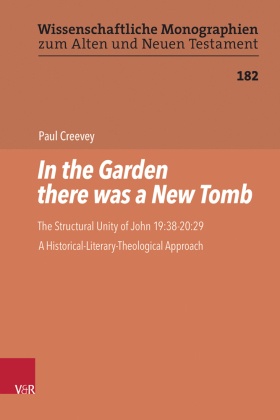
In the Garden there was a New Tomb - The Structural Unity of John 19:38-20:29. A Historical-Literary-Theological Approach. Dissertationsschrift
| Verlag | Vandenhoeck & Ruprecht |
| Auflage | 2024 |
| Seiten | 432 |
| Format | 16,0 x 3,4 x 23,5 cm |
| Gewicht | 817 g |
| Artikeltyp | Englisches Buch |
| Reihe | Wissenschaftliche Monographien zum Alten und Neuen Testament Band 182 |
| ISBN-10 | 3525501994 |
| EAN | 9783525501993 |
| Bestell-Nr | 52550199A |
The insertion of chapter's into the Johannine Gospel in the 13th century has guided interpretation of key events in this spiritual Gospel. This work suggests that the post-death events of Jesus should begin at John 19:37.
The first time to consider the cohesiveness, coherence and distinctiveness of this text
Paul Creevey considers the central question: Can one simply assume that the story of the burial, empty tomb, and appearance narratives in John's Gospel are a literary unity? There are many issues in coherence and cohesion that have led to a wide number of interpretations given to many different aspects of the text that is John 19:37-20:29. It is also widely recognized that John's retelling of these events are distinctive. Creevey analyses the text of John 19:37-20:29, showing that the Johannine Evangelist has created a two-part tripartite defense of two central aspects of Christian faith: the case for the empty tomb and the case for the appearance narratives. Using internal literary evidence as well as external evidence from the earliest extant manuscripts he argues that this text has been created to show that the testimony and witness of those first disciples is true and is the basis of any future Christian belief. This work addresses all the issues in the apparent lack of cohesi on and coherence in the text to show that each part of the text is connected to an overall defense of belief in these two central aspects of faith. Finally, what is at the heart of these two events is the need to accept that it is the relationship that one has to Jesus and the Father that is central to acceptance of this narrative as an inspired narrative that offers hope for all people.
